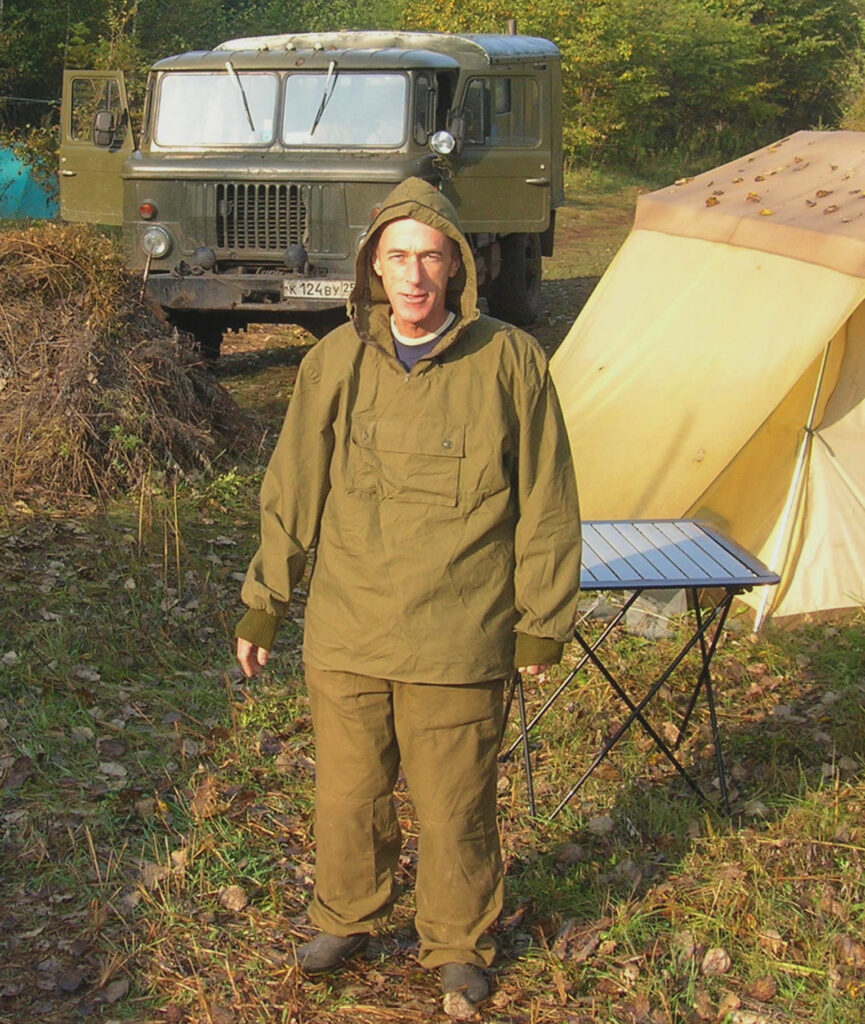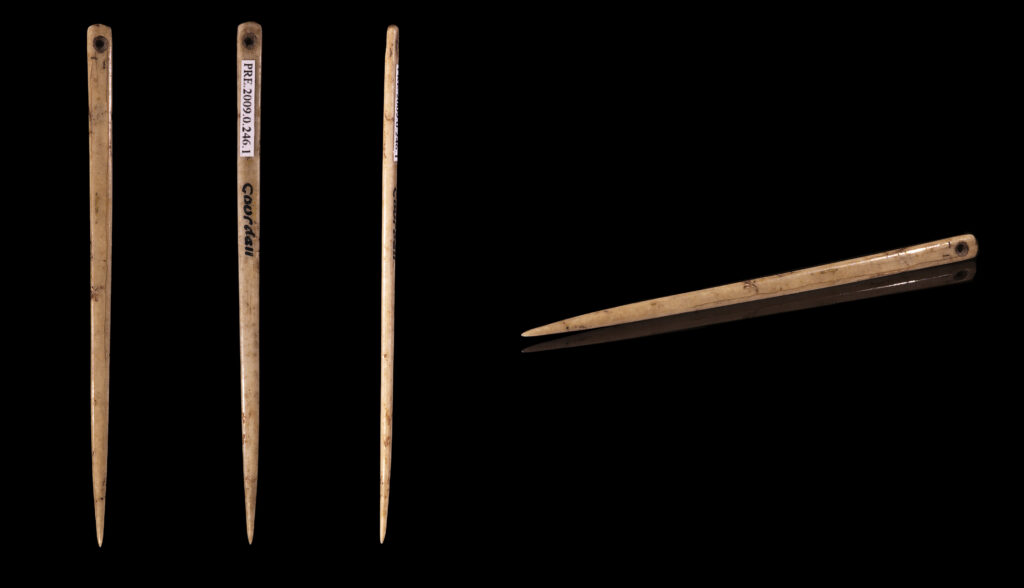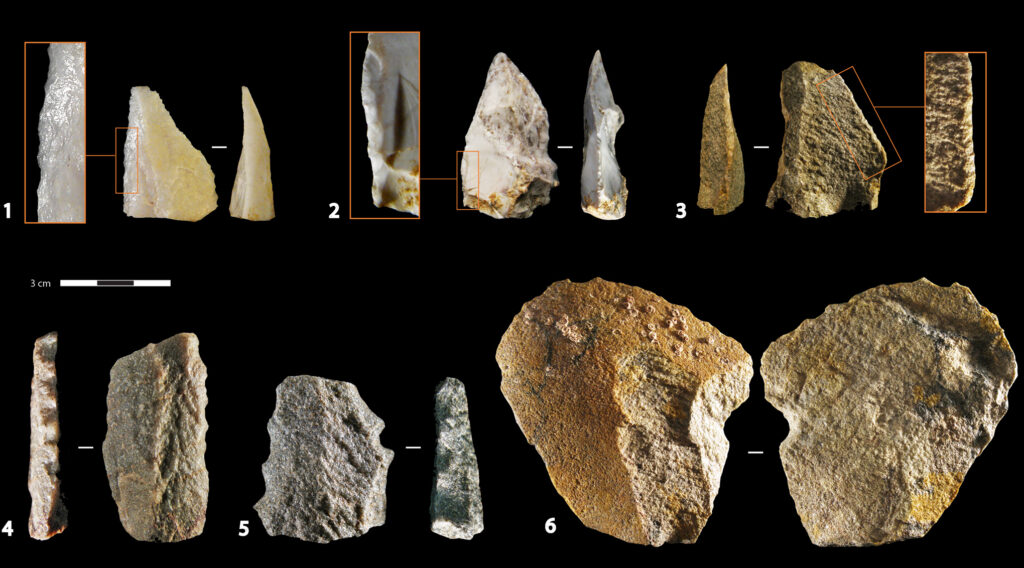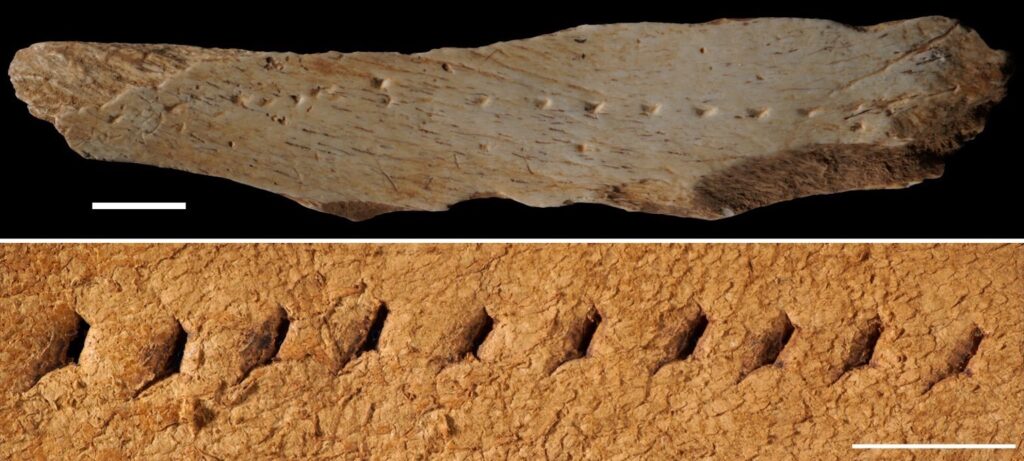My Search for the Origins of Clothing
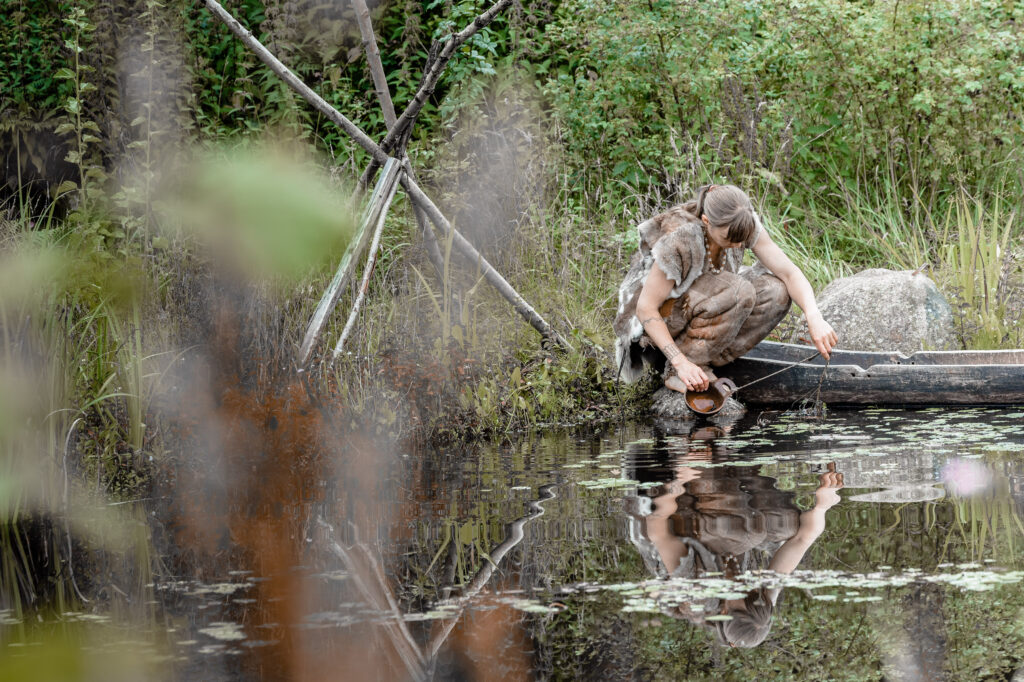
seeking paleolithic clothing origins
Not long ago, I left my home in sunny Australia to join an archaeological dig in the Siberian mountains of eastern Russia. On the first morning, I awoke cold to my core, even in a well-padded sleeping bag. I crept near the campfire and held my hands so close that the gloves began to smolder. But I kept shivering. I was cold on the inside.
As a medical doctor, I recognized the symptoms of mild hypothermia.
Siberia is a region where people surely always needed warm apparel. The origins of clothing is my special interest, a notoriously difficult topic because items of dress rarely last long. Trained in medicine and archaeology, I investigate the matter by combining what’s known about the thermal limits of human bodies and paleoenvironments. My brush with hypothermia, though embarrassing for someone with my expertise, reaffirmed my approach.
Standards of body cover vary across cultures. But many people would be mortified to be caught unclad in public. For folks in cold climates, insufficient clothing can be fatal, as I sensed in Siberia. Yet no other creatures don garments. Why our ancestors, alone in the entire animal kingdom, adopted clothes is one of those big questions that science has only recently begun to tackle.
Though many gaps in the story remain, the emerging evidence suggests clothing really had two origins: first for biological needs, then cultural.
THE INVISIBLE remnants of early clothes
Archaeologists who study the Paleolithic or Stone Age tend to ignore clothing. Perhaps this isn’t surprising, considering not a single shred has survived from this ice age era between roughly 2.6 million and 12,000 years ago. Archaeologists are reluctant to look for something they will never find.
Stone Age clothing may be invisible to archaeology, but that does not mean Paleolithic clothing origins cannot be investigated scientifically. For instance, fossils show humans inhabited ice age Eurasia when the frigid windchill reduced safe exposure times to an hour or two. Clearly, those people had adequate clothes. And, fortunately, tools used to make clothing, such as sewing needles, provide some tangible—albeit indirect—evidence.
It’s also helpful to distinguish between simple and complex clothing. Simple clothes hang loose, such as capes, cloaks, or loincloths. They can be warm—a drapey fur cloak, for instance—but simple clothes are prone to wind penetration. Complex clothes hug the body snuggly, usually with separate sleeves or pantlegs. Also, complex clothes may have multiple layers.
Archaeologists can detect simple and complex clothes in the Paleolithic record because they entail different technologies. Tools to scrape hides indicate the existence of simple clothes, and plenty of hide-scrapers surface at archaeological sites in middle latitudes from a million years ago onward. However, scraper-equipped hominins disappear from middle latitudes during glacial periods, reflecting the limited insulation value of simple garments.
Complex clothes necessitated more complex technologies. To shape animal hides, people used dedicated cutting tools called blades. They also pierced holes in the hides to sew the cut segments together. The basic hide-piercing tool is called an awl, a slender pointed artifact often made from an elongated animal bone, such as a thin forearm bone or a rib. Later, Paleolithic humans invented a more sophisticated sewing tool: the eyed needle.
The first start of paleolithic clothes
Tracking these artifacts across time and space suggests Paleolithic clothing emerged as an adaptation to stay toasty—and complex clothes were needed to survive extreme temperatures and windchills.
Hominins with hide scrapers occupied what is today northern China during a warm phase 800,000 years ago, as evidenced by the famous Peking Man fossils near Beijing. Scraper-equipped hominins also appeared near London 400,000 years ago during a warm interglacial period when tropical mammals such as hippopotami waddled on the banks of the River Thames. In both cases, simple clothes fit the climate conditions and the tools produced: These hominins probably donned cloak-like apparel to get them through the winters.
But after 400,000 years ago, hominins lingered in middle latitudes during colder glacial times—surely with complex clothes. Archaeologists find blade tools in the Caucasus from 300,000 years ago, and blades and awls were made in Southern Africa during a very cold phase 75,000 years ago. Northern China had blade tools from 40,000 years ago, bone awls from 35,000 years ago, and eyed needles from 30,000 years ago. In Europe, eyed needles accompanied Homo sapiens toward the coldest part of the last glacial cycle, the last glacial maximum, around 22,000 years ago.
Back in Siberia, eyed needles allowed our species to penetrate the frigid Northeastern corner of Eurasia, where even Neanderthals—who lacked eyed needles—never ventured during peak glacial times.
AMBIGUOUS ARTIFACTS for early clothes
However, it’s not always obvious that certain artifacts were used to make Paleolithic clothing. Take for instance, a 40,000-year-old item found at an abandoned gravel pit 20 kilometers south of Barcelona, Spain, in 2007. The 11-centimeter-long tool consists of a flat piece of animal bone, probably a pelvic fragment from a wild horse or an auroch, the wild ancestor of domestic cattle. The bone slab bears 28 puncture marks, with one set of 10 pecks spaced regularly in a line.
Over the years, archaeologists have found other similar, punctured artifacts. Generally, they’ve thought the marks were decorative patterns or an early kind of notation—to mark phases of the moon perhaps.
But in a recent Science Advances paper, scientists proposed the artifact functioned as a board for punching holes through hide when ice age people made tailored garments. The need for snug clothes makes sense given the local climate at the time: cold and getting colder.
To test their idea, the researchers conducted experiments using volunteers who tried to duplicate the punctures using ice age crafting techniques. After some failed attempts with various tools, the participants landed on a successful method: Using a pointed stone implement called a dihedral burin, they pierced holes through rabbit skins and leather that rested on a cow rib. The action produced regular punctures in the rib that were microscopically indistinguishable from those on the Spanish artifact.
If this interpretation is correct, the punchboard predates eyed needles in Western Europe by some 15,000 years. Rather than signifying the first tailoring, those later eyed needles may reflect finer sewing to make the extra layers needed as the last glacial maximum approached: the first underwear.
Paleolithic clothing origins, continued
But clothing did not end with the ice age. Garments garnered purpose beyond biologically necessary insulation.
People have long adorned their bodies with paints and tattoos. Groups in colder climates lost this form of expression when they had to cover up for warmth. So, it’s likely they transferred adornments to clothing, using it to signal aspects of their identities, such as gender, clan, or profession.
Decoration may have even motivated Paleolithic tailors. One of the authors of the Science Advances paper, archaeologist Francesco d’Errico, showed in earlier research how novel artifacts recovered from the ice age likely held social and psychological meaning. He cites pierced marine shells from around 100,000 years ago and later beads that might have been sewn onto clothes.
One fantastic example comes from the 34,000-year-old site of Sunghir near Moscow, Russia. There, more than 13,000 beads carved from mammoth ivory covered the skeletons of an adolescent, a child, and one adult male. The way the beads lay in an orderly array suggests they were sewn onto fitted garments.
Once the new decorative function of clothing became entrenched, the desire to wear clothes was uncoupled from climate. Instead of temperature, social and psychological factors inspired humans to cover up.
Thanks to research on past climates and the survival of clothing technologies such as the Spanish find, the origins of Paleolithic clothing are no longer invisible.

































